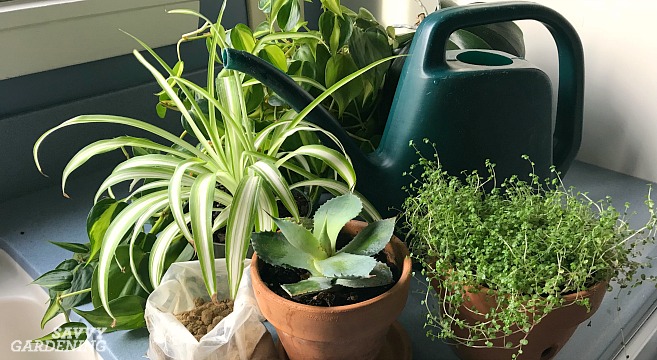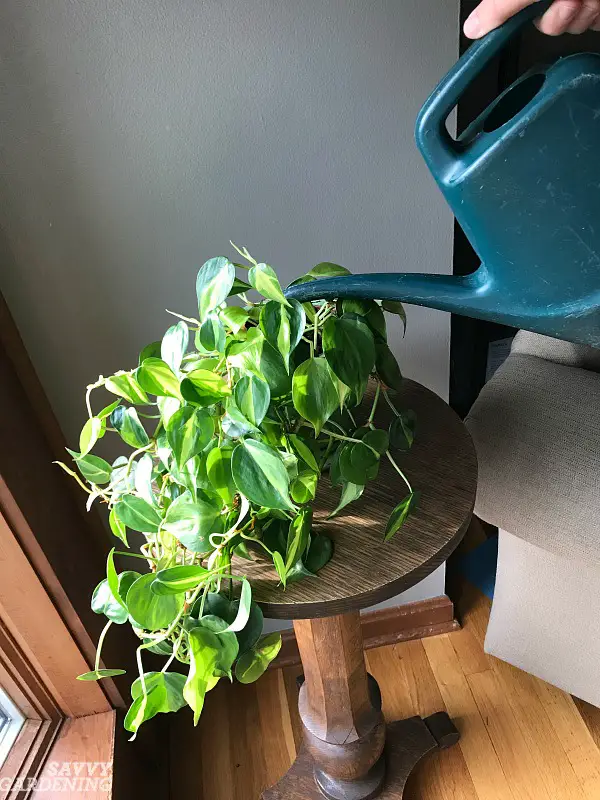Fertilizing houseplants can be tricky. It’s essential to get the timing right.
Houseplants need nutrients to thrive, just like outdoor plants. Knowing the best time to fertilize them can make a big difference in their health. This guide will help you understand when to feed your indoor greenery. Different plants have different needs, and the changing seasons play a role too.
By understanding these factors, you can ensure your houseplants get the nutrients they need at the right time. This will lead to healthier, more vibrant plants that can brighten up your living space. Let’s dive into the best times to fertilize your houseplants and keep them flourishing year-round.

Credit: tedsgardens.com
Introduction To Houseplant Fertilization
Fertilizing houseplants helps them grow strong. It gives them the nutrients they need. Plants can’t get all nutrients from soil alone. Fertilizer helps fill this gap. This is why it’s important to fertilize.
Importance Of Fertilizing
Fertilizer helps plants stay healthy. It makes leaves green and strong. Fertilized plants grow faster. They produce more flowers. Without fertilizer, plants may become weak. They might turn yellow or stop growing.
Common Fertilization Myths
Many think more fertilizer is better. This is not true. Too much can harm plants. Another myth is that all plants need the same fertilizer. Different plants need different nutrients. Some say fertilizing in winter is good. Most houseplants rest in winter and don’t need much fertilizer.
:max_bytes(150000):strip_icc()/ms-when-to-fertilize-houseplants-0f80e8e0c6644bf5aa49f7f1d3c3bbc1.jpg)
Credit: www.marthastewart.com
Understanding Plant Growth Cycles
Fertilizing houseplants during their active growth period in spring and summer helps them thrive. Use a balanced, water-soluble fertilizer every two weeks.
Seasonal Growth Patterns
Plants grow in seasons. Spring and summer are the best. They need more food during these times. Fertilizing helps them grow strong. In fall and winter, plants grow less. They need less fertilizer then. Watch your plants. See how they grow in each season.
Dormancy Periods
Many houseplants have a dormant period. This is like sleep for plants. They rest and save energy. It often happens in winter. During dormancy, don’t fertilize much. Too much can hurt them. Wait until they wake up. Then start fertilizing again. This helps them stay healthy.
Choosing The Right Fertilizer
Fertilizers come in two main types: organic and synthetic. Organic fertilizers come from natural sources. Examples include compost, manure, and bone meal. They release nutrients slowly. This helps plants grow steadily.
Synthetic fertilizers are man-made. They provide nutrients quickly. Common types include liquid, granular, and slow-release. These fertilizers often contain a mix of nitrogen, phosphorus, and potassium. Look for the N-P-K ratio on the package.
Organic Vs. Synthetic Options
Organic options are better for the environment. They improve soil health. These fertilizers are less likely to cause damage if overused.
Synthetic fertilizers are easy to use. They provide immediate results. But, they can harm soil over time. Overuse can also burn plant roots.

Credit: savvygardening.com
Spring Fertilization Tips
Spring is the best time to fertilize houseplants. Plants wake up after winter. They need more nutrients to grow. Fertilize when you see new leaves. Choose a sunny day for fertilizing. Avoid rainy or cloudy days. This helps the plants absorb nutrients better. Use a balanced fertilizer for the best results.
Mix fertilizer with water. Follow the instructions on the package. Water the plant soil with the mix. Do not over-fertilize. Too much can harm plants. Use the correct amount. Repeat the process every 4-6 weeks. This ensures steady growth. Monitor your plants for any signs of stress. Adjust the amount if needed.
Summer Fertilization Strategies
During summer, houseplants need more nutrients. Fertilize every two weeks for most plants. Some plants may need weekly feeding. Use a balanced liquid fertilizer. Follow the instructions on the label. Over-fertilizing can harm the plants. Keep an eye on the plant’s growth. Adjust feeding if needed. Healthy plants should have green leaves and steady growth.
High temperatures can stress houseplants. Keep plants away from direct sunlight. Water plants more often. Dry soil makes stress worse. Use a spray bottle to mist the leaves. This helps cool the plants. Check the soil before watering. Wet soil can lead to root rot. Use a fan to increase airflow. This helps keep plants cool. Reduce fertilization if plants show stress.
Fall And Winter Care
During fall and winter, houseplants need less fertilizer. Plants grow slower in cold months. Over-fertilizing can harm them. Using too much can burn roots. Fertilize less often now. Only use a small amount. This keeps plants healthy without stress.
Even with less fertilizer, plants need care. Water them when soil feels dry. Keep them in bright, indirect light. Remove any dead leaves. This helps prevent pests. Healthy plants can survive winter.
Signs Of Over-fertilization
Plants show signs when they get too much fertilizer. Yellow leaves can be a sign. Brown leaf tips may appear. Leaves might curl or droop. Another sign is white crust on soil. Slow growth can happen too. Plants may look weak and sick. These are common symptoms. Pay attention to these signs.
Flush the soil with water. This helps remove extra fertilizer. Cut back on the fertilizer amount. Give plants a break from feeding. Trim damaged leaves. Use a balanced fertilizer next time. Check the plant’s needs. Adjust care as needed.
Creating A Year-round Fertilization Schedule
Different plants need different care. Succulents and cacti need less fertilizer. Leafy houseplants like ferns need more food. Flowering plants need balanced nutrients to bloom. Use a fertilizer made for your plant type. Read the label for instructions. Too much fertilizer can harm plants.
Indoor plants have different needs from outdoor ones. They get less sunlight and fresh air. This affects their growth. Fertilize houseplants every 4-6 weeks. Use less fertilizer in winter. Plants grow slower then. In spring and summer, they need more food. Use a water-soluble fertilizer. It is easy to apply.
Frequently Asked Questions
When Is The Best Time To Fertilize Houseplants?
The best time to fertilize houseplants is during their growing season, typically spring and summer. This is when they need the most nutrients.
How Often Should I Fertilize Houseplants?
You should fertilize houseplants every 2-4 weeks during their active growth period. Reduce fertilization in fall and winter.
What Type Of Fertilizer Is Best For Houseplants?
A balanced, water-soluble fertilizer is best for houseplants. Look for one with equal parts nitrogen, phosphorus, and potassium.
Can I Fertilize Houseplants In Winter?
It’s generally not recommended to fertilize houseplants in winter. Most houseplants are dormant and don’t need extra nutrients during this time.
Conclusion
Fertilizing houseplants at the right time helps them thrive. Early spring and summer are the best periods. This is when plants grow most actively. Use balanced fertilizers for the best results. Always follow the instructions on the fertilizer package. Over-fertilizing can harm your plants.
Regular feeding ensures your houseplants stay healthy and vibrant. Happy gardening!

My mission is to help you bring the beauty of nature indoors with expert advice, detailed plant care guides, and creative design ideas.





Leave a Reply